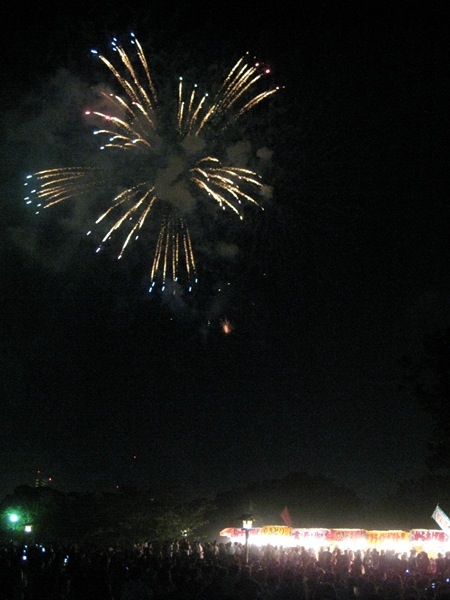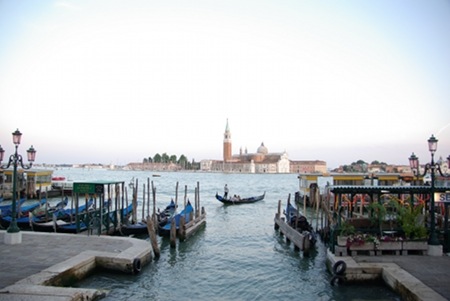around teufelsee
Tuesday, October 19th, 2010On the occasion of the current convention on biodiversity some images from a green part of Berlin, called Teufelsee (the “satanic lake”) in the district of Köpenick.
randformblog on math, physics, art, and design |
On the occasion of the current convention on biodiversity some images from a green part of Berlin, called Teufelsee (the “satanic lake”) in the district of Köpenick.
Unfortunately the laptop crash problem is still unresoved and blogging will stay retarded. Before the crash I edited already two posts.
This here is the first post it is about comments on nuclear energy which I left on other blogs. Moreover it gives a motivation why I wrote the second post which is an overview over the posts on nuclear energy on randform. (please see below)
(more…)
In todays nature magazine there was an article about the “Global phytoplankton decline over the past century”. I have no access to the article however in an article by Markus Becker – a reporter from the german news magazine Spiegel Online – it was reported that since 1950 on average the mass of phytoplankton declined globally by 40%. Since phytoplankton are amongst others a major food source for food webs this affects e.g. the abundance of fish. Moreover phytoplankton are responsible for much of the oxygen present in the earth’s atmosphere. A main reason for the decline of phytoplankton is climate change.
-> related article on randform about oceans and climate change
->related article on randform on microorganisms and oxygen supply
-> see also here
update 30.7.10: You might also want to kick into the subject by reading
about the decline in fish occurence:
->Elizabeth Kolbert on overfishing on Azimuth
-> randform post about fish consumption and nutrition
Last time when I was in Göttingen I found a poster at the math department documenting an art science collaboration between mathematics professors William Thurston, Kazushi Ahara and Sadayoshi Kojima on one side and a team around clothing designer Issey Miyake, notably including chief designer Dai Fujiwara of Issey Miyake (here a link to a partial version of the poster, see also absnews article by Jenny Barchfield). A result of this collaboration is that the Issey Miyake Fall-Winter 2010-2011 ready-to-wear collection is inspired by the geometrization conjecture.
From the poster:
In the mid-October of 2009, Prof. Thurston showed us the detail drawings of the “8 Geometry Link models as Metaphor of the Universe” They inspired us to make the collection based on them, accompanying design study with rope and toile. Considering the body itself as the Universe, we have added our own interpretation of beauty to them. The new perception of the body shared by all the members of the team resulted in the discoveries of new lines and forms, which were then applied to textile, color and detail studies. Thus the new collection has taken shape steadily, revealing its whole picture eventually. To sum up the exchange with Prof. Thurston led us to find a completely new kind of beauty and embody it in clothing. This mission was, as it were, an odyssee to explore the Universe with infinite imaginations.
The geometrization conjecture roughly says (I am not an expert on this) that a three dimensional volume form without boundary (a two dimensional analog of such a form would be for example the surface form (i.e. the “skin”) of a ball or the surface form of a doughnut) can be decomposed into “pieces” which have one of 8 characteristic “geometric structures”, which means roughly that in a small neighbourhood of any such “piece” there is – out of only 8 characteristic ways – one specific way to measure length. A theorem states that any three dimensional (oriented) volume form without boundary can be obtained by cutting a “thick” (that is instead of a rope take a ribbon) link out of a three dimensional sphere. Thus you can characterize special types of three dimensional volume forms (here: “the pieces”) by assigning a link to them. This is – by what I understood sofar- why there are 8 links (or link models) on the poster – they characterize the 8 types of possible “pieces”, which built up three dimensional volume forms without boundary.
Why do they call these 8 links “Metaphor of the Universe”? I can only make wild guesses, which sound rather like science fiction than science: Maybe if you imagine the space of the universe to be eventually such a three dimensional volume then by cutting it into pieces (may be along black hole horizons huh?!) and “measuring distances” (determine a metric) one could make deductions about the actual form of the universe? Or – reversely by making assumptions about the form of the universe (like e.g. that its space is a three sphere) one may get informations about what could be inside black holes…given that one finds all black holes…(this is just a funny joke).
But joking aside – I think they call it Metaphor of the Universe because these simple 8 links may be used to describe quite complicated things.

ranform wishes all its clients a happy new year and not a happy new ear !
Again on new years eve we will try to avoid the inner districts of Berlin since the roads in Berlin usually feel almost like being in a war at that evening.
Below are some images from the Nishinihon firework show in Ohori Park, Fukuoka from over a year ago. Here firework specialists are creating an amazing firework with high precision. The specialists are even able to rather scientifically predict the height and time of detonation in such a way that they are able to create little images like a smilie or a heart (please see below). Where it should be said that a heart which is poetically dropping down from the skies is of course hilarously kitchy.
Remark: The images were made with a small canon without a tripod.

In the image above it looks as if a boat ferries across to Isola di San Michele. However what you see there it is just Isola di San Giorgio Maggiore. Nevertheless in Venice you may still feel as if Tadzio from the famous film may lurk around the corner any next moment.
Below I make a little advertisement for Piazza San Marco and in particular St. Mark’s Basilica since there are yet not enough tourists there…;)